The big picture: It's no secret that China has been working to reduce its reliance on American technology, hence its decision to commit no less than $29 billion to homegrown intellectual property around semiconductors. The country also plans to replace all foreign hardware and software from its public infrastructure and institutions in favor of local alternatives by 2022.
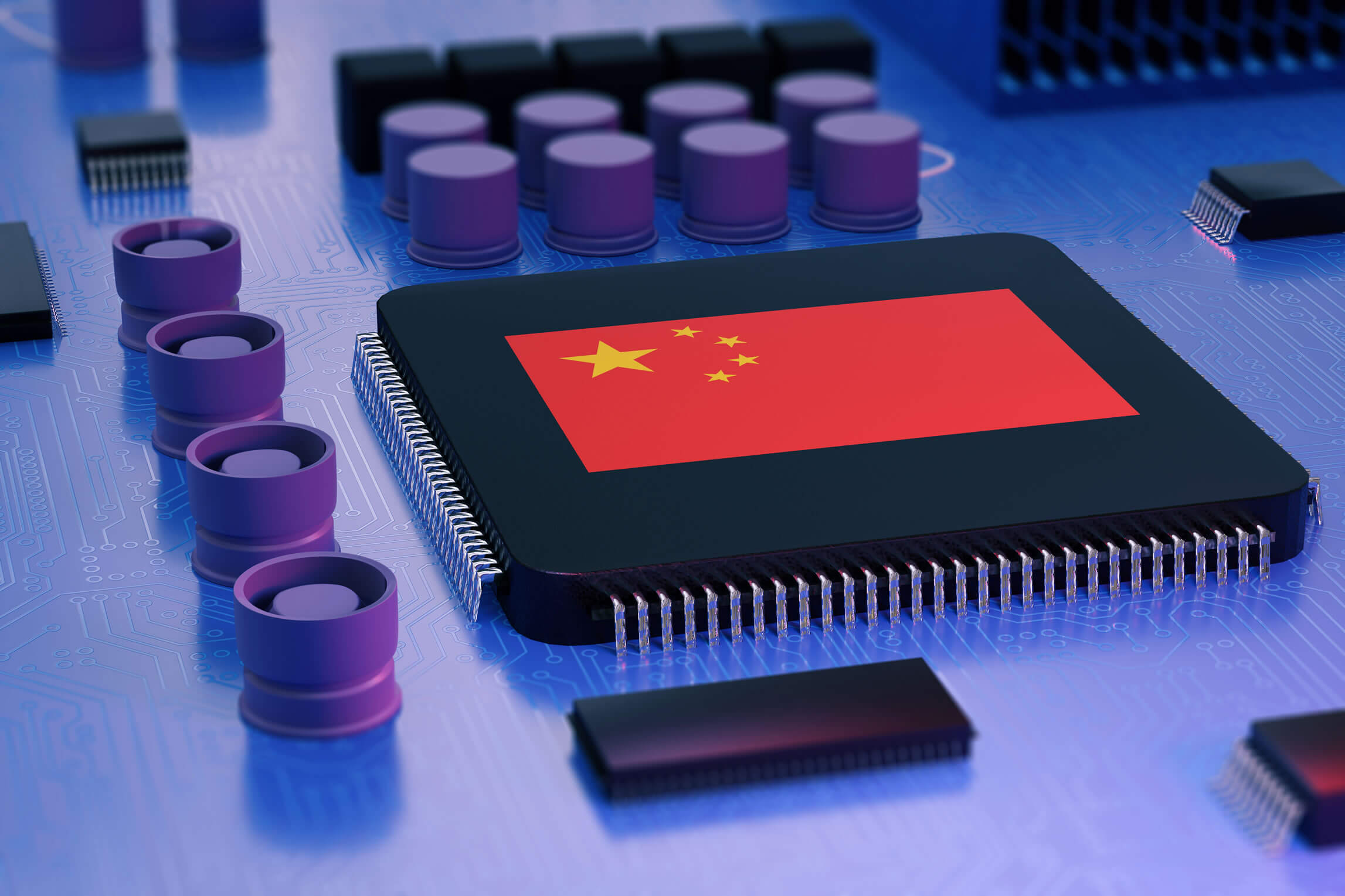
One of the latest developments in that path is the recent arrival to the CPU market of an impressive x86 chip that is the result of a joint venture between the Chinese government and Via Technologies. It should be noted that Zhaoxin is not the first, but rather the culmination of a relationship between the two entities that started in 2013 and has supplied various local clients to this day.
Zhaoxin's KaiXian KX-U6780A isn't something that you'll be able to buy outside of China anytime soon, but it paints an important picture of the progress made by a company that flew under everyone's radar for much of its existence.
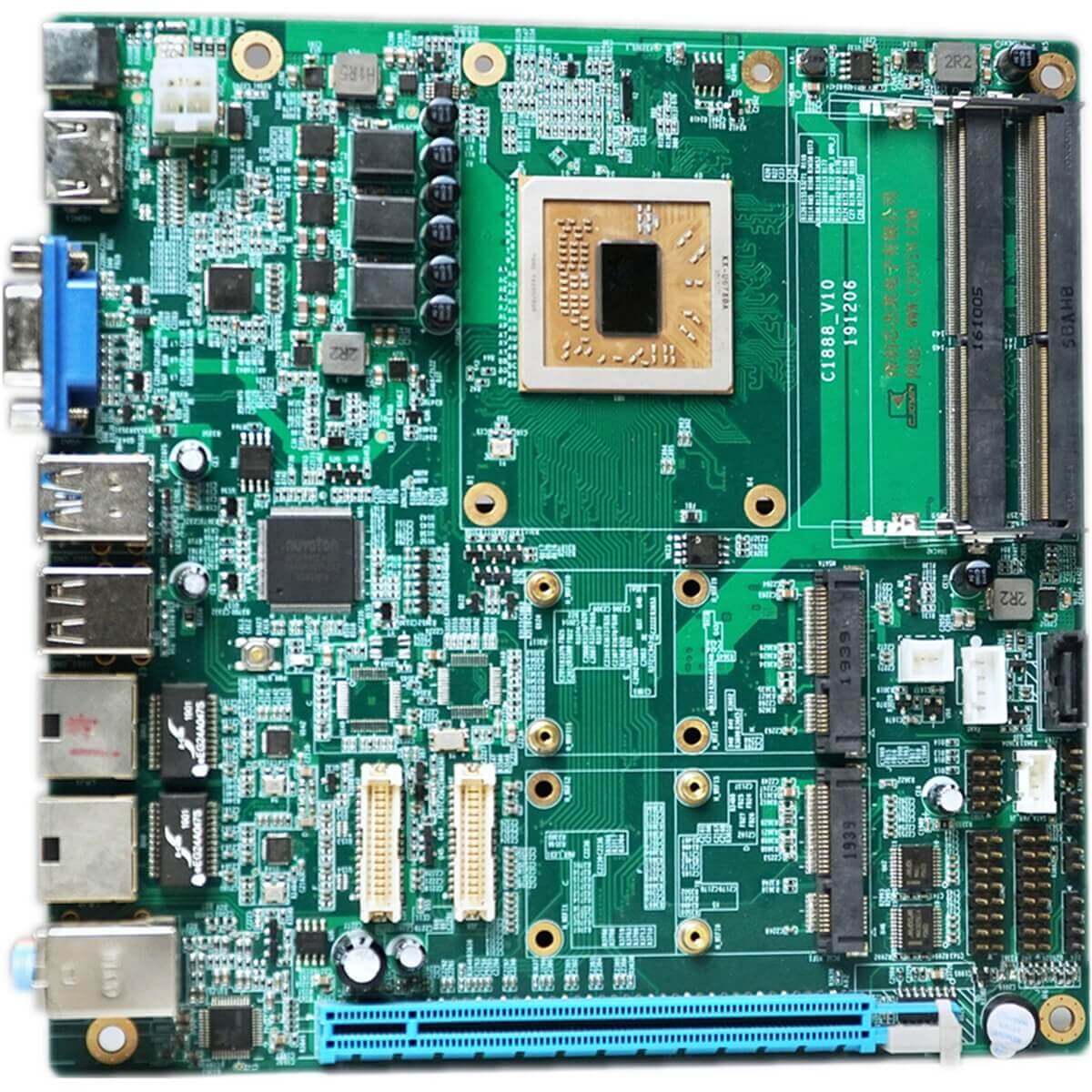
The 8-core CPU is the second-fastest in Zhaoxin's latest lineup and is based on the LuJiaZui architecture, which itself is an evolution of the WuDaoKou architecture. To get an idea on how much work went into it, the company says it's the result of over 9,000 engineering months and 200 TB worth of data from simulating more than 4,000 cores against all kinds of software.
Until now, we've only been able to judge its capabilities based on leaks and official marketing materials. For instance, Zhaoxin claims it should perform similarly to an Intel Core i5-7400 (Kaby Lake), a chip from 2017. When the KaiXian chip appeared in PassMark's CPU benchmark database, the result seemed to confirm this, except that the single-thread rating was considerably lower.
Then we saw the KaiXian KX-U6780A make an appearance on Geekbench earlier this month, with results following the same overall pattern. The Chinese CPU managed a single-core score of 363 and a multi-core score of 2091, which is outside of the scope of the i5-7400 that sits at 884 and 2793, respectively.
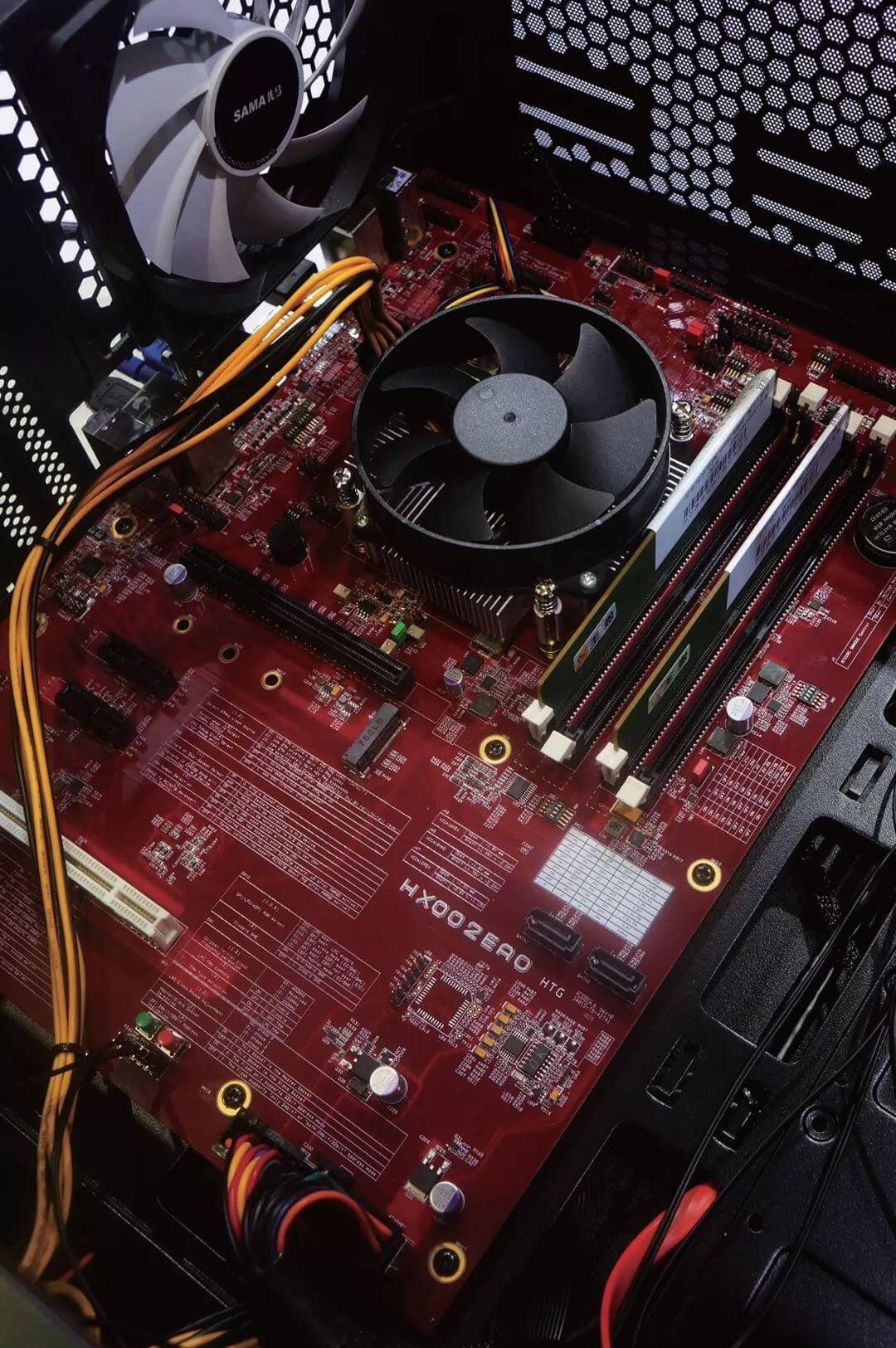
The new processor is built by TSMC on a 16nm FinFET process node and can operate at up to 2.7 GHz. It's rated for a TDP of 70W, which is somewhat comparable to the i5-7400 TDP of 65W, but with no L3 cache and a larger process node, it's no wonder why the Chinese chip isn't quite able to keep up with Intel's.
Still, it's a big step for Zhaoxin. The folks over at Tom's Hardware were able to get their hands on the KaiXian-U6780A processor and the HX002EH1 development board. The CPU comes in a 35mm by 35 mm HFCBGA package, and the stock cooler is reminiscent of AMD's old stock coolers, with a relatively low profile heatsink and a noisy fan. An interesting fact about the Zhaoxin CPU is that it doesn't feature some of the fancy technologies present in AMD and Intel's CPUs. There's no simultaneous multi-threading (SMT), hyper-threading, or any advanced frequency boost capabilities.
At most, the KX-U6780A supports a few P-states that seem to be there just as a way to save power when you're using the "better performance" and "better battery" power modes on Windows 10. Otherwise, choosing the "best performance" power mode pegs the frequency at 2.7 Ghz regardless of what the CPU is doing.
You get 16 PCIe 3.0 lanes and support for up to 64 GB of DDR4-2666 RAM, and a custom, ZX-C960 iGPU that supports DirectX 11, OpenCL 1.1, OpenGL 3.2, and accelerated H.264 and HEVC encoding and decoding. Zhaoxin says the chip is capable of driving up to two 4K monitors simultaneously. However, trying to play Dota 2 on it at 720p and the lowest graphics settings results in a modest 19-20 fps, which is well below the 100-120 fps that you'd get from the Intel HD 630 found inside an i5-7400.
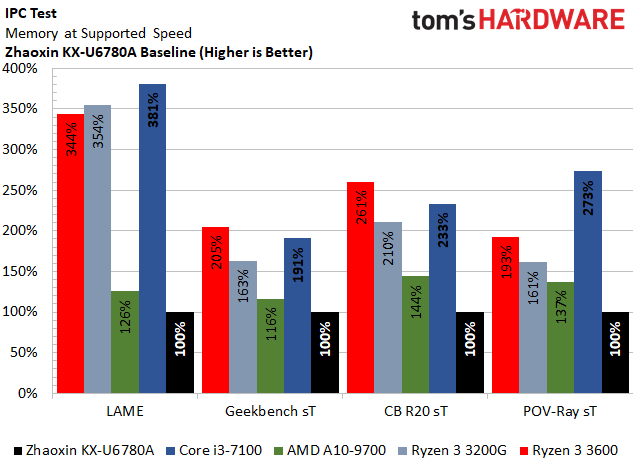
Interestingly enough, the KX-U6780A suffers from some of the Spectre vulnerabilities that affect Intel processors, with Zhaoxin planning to integrate in-silicon fixes in the KX-7000 series. The instructions per clock output is way behind that of modern Intel and AMD CPUs, even entry-level ones like Intel's i3-7100 or AMD's Ryzen 3 3200G.
When Tom's Hardware compared the single threaded and multi-threaded Cinebench scores of these chips, it found that a lack of hyper-threading and frequency boosting abilities places the Zhaoxin CPU at a severe disadvantage. While it was almost able to keep up with a Core i3-7100 in the multi-core test, the single-threaded performance leaves much to be desired.
Power consumption couldn't be measured reliably due to particularities in Zhaoxin's development board and power delivery choices, but the maximum power draw through the 8-pin connector seemed to top at 55 W under AIDA's stress test. Fortunately for the Chinese company, it plans to move to 7nm with the KX-7000 series, which should bring about better numbers in this department.
Tom's Hardware tested the KX-U6780A against a number of benchmarks and games using an RTX 2080 Ti, and the results are largely unsurprising. The Zhaoxin processor managed a 3DMark Fire Strike Physics score or 6871, which is just a tad lower than the 7404 achieved by the Intel i5-7400.
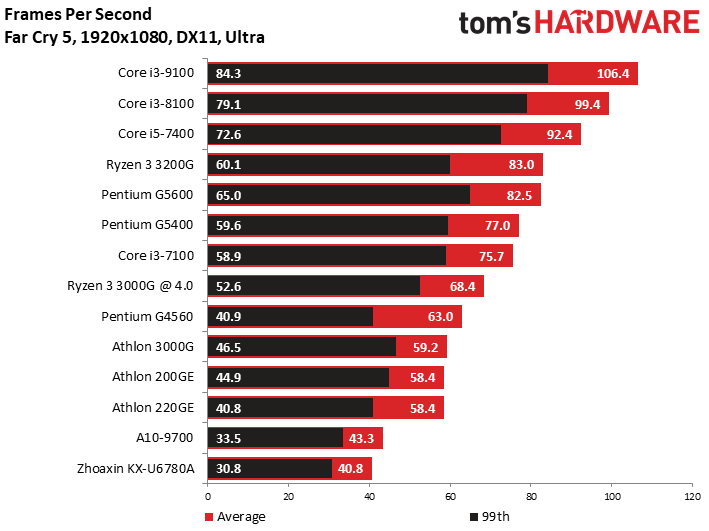
However, synthetic benchmarks are rarely indicative of real-world performance, and the 8-core Zhoaxin KX-U6780A trails even the weakest Intel and AMD dual-core CPUs in games like Far Cry 5, Civilization VI, Dawn of War III, and even the less demanding World of Tanks. This should be no surprise given the low clock speed and lack of SMT.
The KX-U6780A also doesn't excel in web browser benchmarks and application launch times, and the same can be said about encoding performance, which is at least two times slower in Handbrake with both x264 and x265. The only places where the Zhaoxin CPU showed some strength in are 7-zip and Zlib compression and decompression benchmarks.
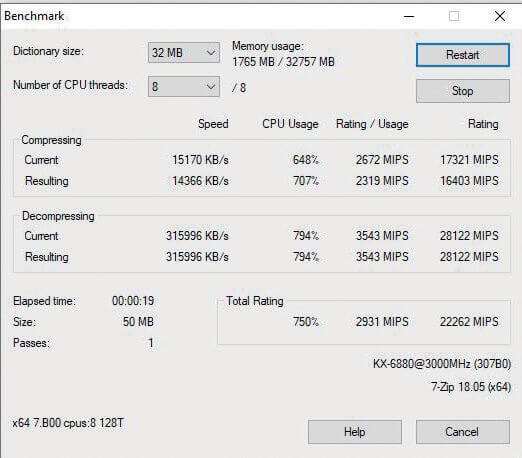
Someone from China did these tests on a KX-U6880, which was able to score 28122 MIPS, while the KX-U6780 tested by Tom's Hardware only managed 19088 MIPS. There is only a 300 Mhz clock speed difference between the two CPUs, which shows that Zhaoxin has a lot of room for improvement if it can get its LuJiaZui architecture beyond 3 Ghz.

Above you have a summary of the tests made on the KX-6880 CPU, and although their accuracy should be taken with a grain of salt, it's possible that these are the basis for Zhaoxin's claims that the KX-U6780A can be more or less on par the Intel i5-7400.
The author of these tests explained that the power consumption figures for the KX-U6880 varied between 44 W at idle and 105 W under full load, which is decent for a CPU rated for a TDP of 100 W.
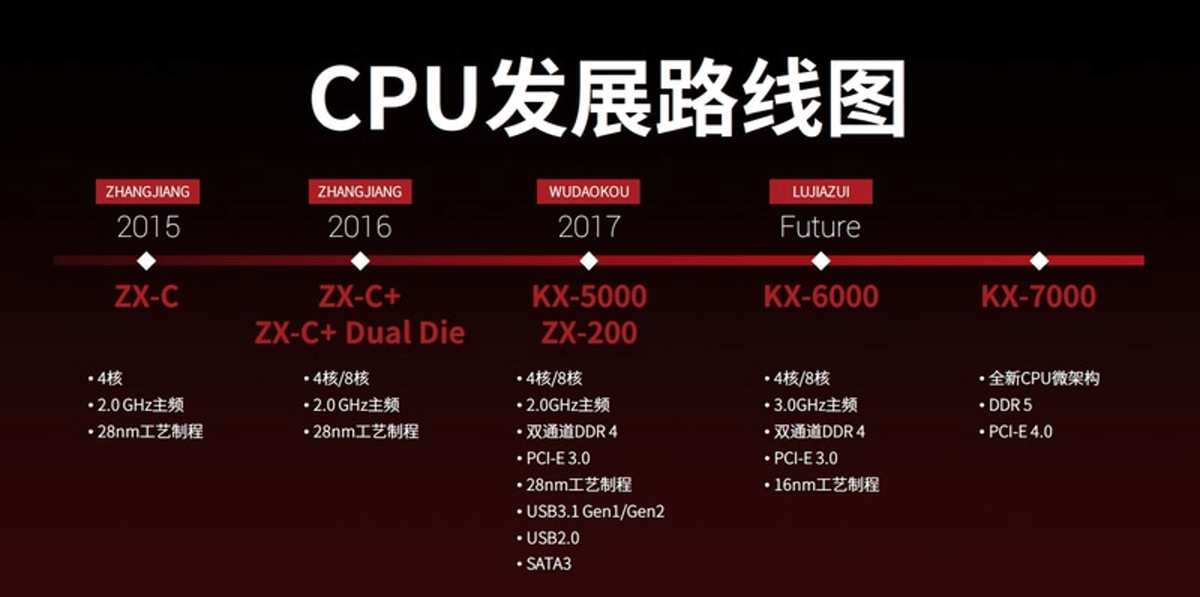
Zhaoxin's latest CPUs aren't in a position to challenge Intel and AMD, but it's important to note that the company has been quick in narrowing the gap. The next steps on its roadmap involve a transition to 7nm or 5nm by 2021 depending on TSMC's calendar, as well as adding support for things like PCIe 4.0 and DDR5 RAM.
The Chinese company is also aiming at the workstation, server, and HPC markets with the KH-40000 series, which will comprise 32-core chips that would could potentially go against AMD's Epyc and Intel's Xeon CPU families.
For now, Zhaoxin is mostly working with system integrators like Lenovo, HP, and local rivals like Xinyingjie to build small form factor PCs like the HP 268 Pro G1 MT that run Windows 10 CMIT Government Edition and come with a BYOsoft Chinese Bios. There's a looming threat of expiring x86-64 patents that might create the opportunity for more competition for Intel and AMD. China's 3-5-2 policy is only the start, with the goal of developing technological solutions that are good enough to serve their needs.
The next potential step could be taking to the global market. We already know the Chinese government has a penchant for pumping money into domestic companies like Huawei to help them rise against established brands. This could very well happen with Zhaoxin, which is transparent about being backed by the Chinese government.
https://www.techspot.com/news/84789-latest-zhaoxin-x86-cpus-tested-what-china-closing.html